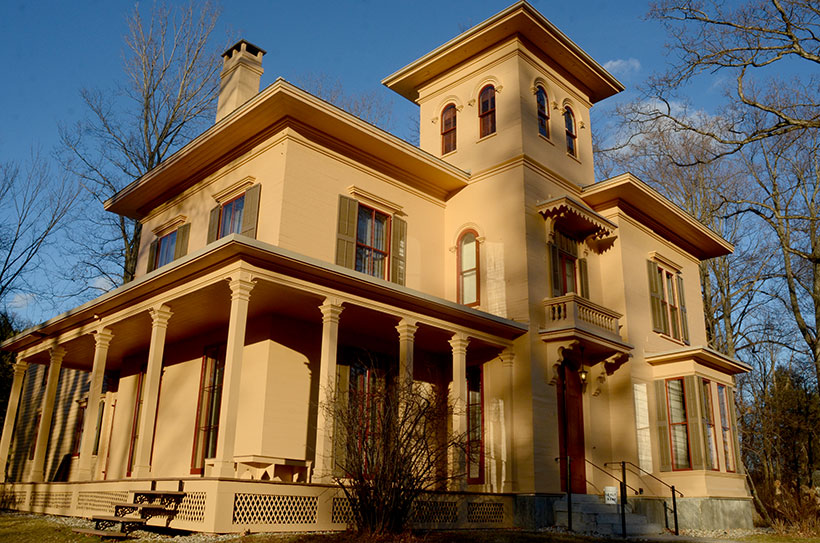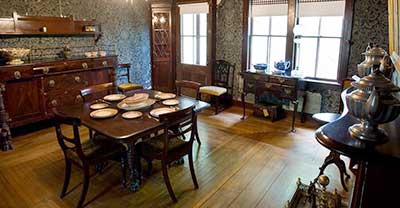
The Evergreens—where Emily Dickinson’s brother and sister-in-law lived “a hedge away” from the poet for three decades, and where later heirs would keep many manuscripts of her then-unpublished work—will be undergoing some much-needed renovations thanks to a $300,000 grant from the National Endowment for the Humanities.
The NEH recently announced the award of a $300,000 Sustaining Cultural Heritage Collections grant for a project that will include replacing and expanding the building’s heating, ventilation and air conditioning system to better protect art and historical objects therein that document the life and world of Dickinson.
The collection of approximately 8,000 objects at The Evergreens includes Hudson River School oil paintings, engravings and lithographs; furnishings such as lace curtains, drapes and upholstery; and a large assortment of household wares, toys, and personal items.
This fall, the Emily Dickinson Museum is entering the third and final phase of infrastructure improvements to its two buildings: the Homestead and the nearby Evergreens. The first two phases involved putting in new electrical, fire-detection and fire-suppression systems and addressing and preventing further water damage, among other improvements. The third phase will include installing insulation, storm windows and new HVAC systems in both buildings. The project as a whole carries a $2.2 million price tag.
The NEH grant, along with a one-to-one match from Amherst College, will support a two-year project to complete these improvements at The Evergreens by 2020.
“Right now, some spaces within The Evergreens are unusable for collections display or storage because of lack of air circulation, extremes of high and low temperatures and humidity,” said Jane Wald, executive director of the Emily Dickinson Museum.

The museum’s grant was among 218 recently awarded by the NEH nationwide, totaling over $43 million.
Unlike the nearby Homestead, which is undergoing a painstaking process to bring back the look of the home during Emily Dickinson’s lifetime after having been home to other families, The Evergreens has survived as much more of a snapshot of what it was in the late nineteenth-century when occupied by the Dickinson family.
Family patriarch Edward Dickinson had The Evergreens built in time for the 1856 wedding of Austin Dickinson, Emily’s brother, and Susan Huntington Gilbert. The proximity of the homes resulted in Emily Dickinson developing an intense bond with her sister-in-law. The Evergreens was darkened in later years by the 1883 death by typhoid fever of the poet’s nephew, 8-year-old Thomas Gilbert (“Gib”), and the souring of Austin and Susan’s marriage, which culminated in Austin’s thirteen-year affair with Mabel Loomis Todd, the first editor of Emily’s posthumously published poems.
Following the 1886 death of the poet, the deaths of her brother and sister-in-law and the subsequent sale of the Homestead, The Evergreens was home to hundreds of then-unpublished poem manuscripts by Dickinson, as well as a collection of other artifacts, such as her piano and writing desk, kept in a first-floor room later dubbed the “Emily Room.” These manuscripts and artifacts would later make their way to Harvard University’s Houghton Library.
For the century following the poet’s death, her niece Martha Dickinson Bianchi and the subsequent owners lived in The Evergreens, furnished much as it was by Austin and Susan Dickinson.
The house was maintained by a private trust for 15 years before the College took ownership in 2003.